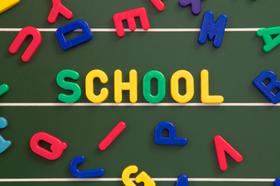For the 2025 school year, there are 5 public middle schools serving 1,575 students in Calhoun School District. This district's average middle testing ranking is 5/10, which is in the bottom 50% of public middle schools in Florida.
Public Middle Schools in Calhoun School District have an average math proficiency score of 53% (versus the Florida public middle school average of 55%), and reading proficiency score of 49% (versus the 52% statewide average).
Minority enrollment is 19% of the student body (majority Black), which is less than the Florida public middle school average of 66% (majority Hispanic).
Overview
This School District
This State (FL)
# Schools
6 Schools
1,745 Schools
# Students
2,051 Students
1,042,011 Students
# Teachers
123 Teachers
54,708 Teachers
Student : Teacher Ratio
17:1
17:1
Student By Grade
District Rank
Calhoun School District, which is ranked within the bottom 50% of all 73 school districts in Florida (based off of combined math and reading proficiency testing data) for the 2022-2023 school year.
The school district's graduation rate of 90-94% has increased from 80-84% over five school years.
Overall District Rank
#39 out of 73 school districts
(Bottom 50%)
(Bottom 50%)
Math Test Scores (% Proficient)
53%
52%
Reading/Language Arts Test Scores (% Proficient)
50%
52%
Science Test Scores (% Proficient)
50%
52%
Graduation Rate
(21-22)90-94%
87%
Students by Ethnicity:
Diversity Score
0.39
0.70
% American Indian
n/a
n/a
% Asian
n/a
3%
% Hispanic
5%
38%
% Black
11%
21%
% White
77%
34%
% Hawaiian
n/a
n/a
% Two or more races
7%
4%
All Ethnic Groups
District Revenue and Spending
The revenue/student of $11,851 in this school district is less than the state median of $11,962. The school district revenue/student has stayed relatively flat over four school years.
The school district's spending/student of $11,487 is less than the state median of $11,615. The school district spending/student has stayed relatively flat over four school years.
Total Revenue
$24 MM
$34,349 MM
Spending
$24 MM
$33,354 MM
Revenue / Student
$11,851
$11,962
Spending / Student
$11,487
$11,615
Best Calhoun School District Public Middle Schools (2025)
School
(Math and Reading Proficiency)
(Math and Reading Proficiency)
Location
Grades
Students
Rank: #11.
Altha Public School
(Math: 51% | Reading: 55%)
Rank:
Rank:
6/
Top 50%10
25820 Ne Fuqua Cir
Altha, FL 32421
(850) 762-3121
Altha, FL 32421
(850) 762-3121
Grades: PK-12
| 640 students
Rank: #22.
Blountstown High School
(Math: 56% | Reading: 46%)
Rank:
Rank:
6/
Top 50%10
18597 Ne Sr 69
Blountstown, FL 32424
(850) 674-5724
Blountstown, FL 32424
(850) 674-5724
Grades: 6-12
| 685 students
Rank: #33.
Calhoun Virtual Instruction Program
(Math: <50% | Reading: ≥50%)
Rank:
Rank:
6/
Top 50%10
20448 Nw Pennington Ave
Blountstown, FL 32424
(850) 674-8734
Blountstown, FL 32424
(850) 674-8734
Grades: K-12
| 31 students
Rank: #44.
Carr Elementary & Middle School
(Math: 45-49% | Reading: 40-44%)
Rank:
Rank:
4/
Bottom 50%10
18987 Nw Sr 73
Clarksville, FL 32430
(850) 674-5395
Clarksville, FL 32430
(850) 674-5395
Grades: PK-8
| 219 students
Rank: n/an/a
20448 Ne Pennington Ave
Blountstown, FL 32424
(850) 674-8734
Blountstown, FL 32424
(850) 674-8734
Grades: K-12
| n/a students
Recent Articles

The 15 Biggest Failures of the American Public Education System
The world is in a constant state of change and those who fail to adjust fall behind. Unfortunately, the American public education system has not kept up with the times and is currently facing a number of serious problems. Keep reading to learn about the biggest failures affecting the modern U.S. public education system as well as some of the trends that could spark change.

Florida Governor Calls for More Funding for State鈥檚 Public School System
Florida Governor Rick Scott has introduced a state budget for next year that pumps one billion more dollars into the public school system. We鈥檒l look at his reasons for the increase and the responses to the proposal.

Can Your Child鈥檚 School Meet the National Standards?
The article discusses the challenges public schools face in meeting national educational standards. It examines current performance trends, identifies key issues affecting student achievement, and explores potential solutions for improving academic outcomes across U.S. public schools.





